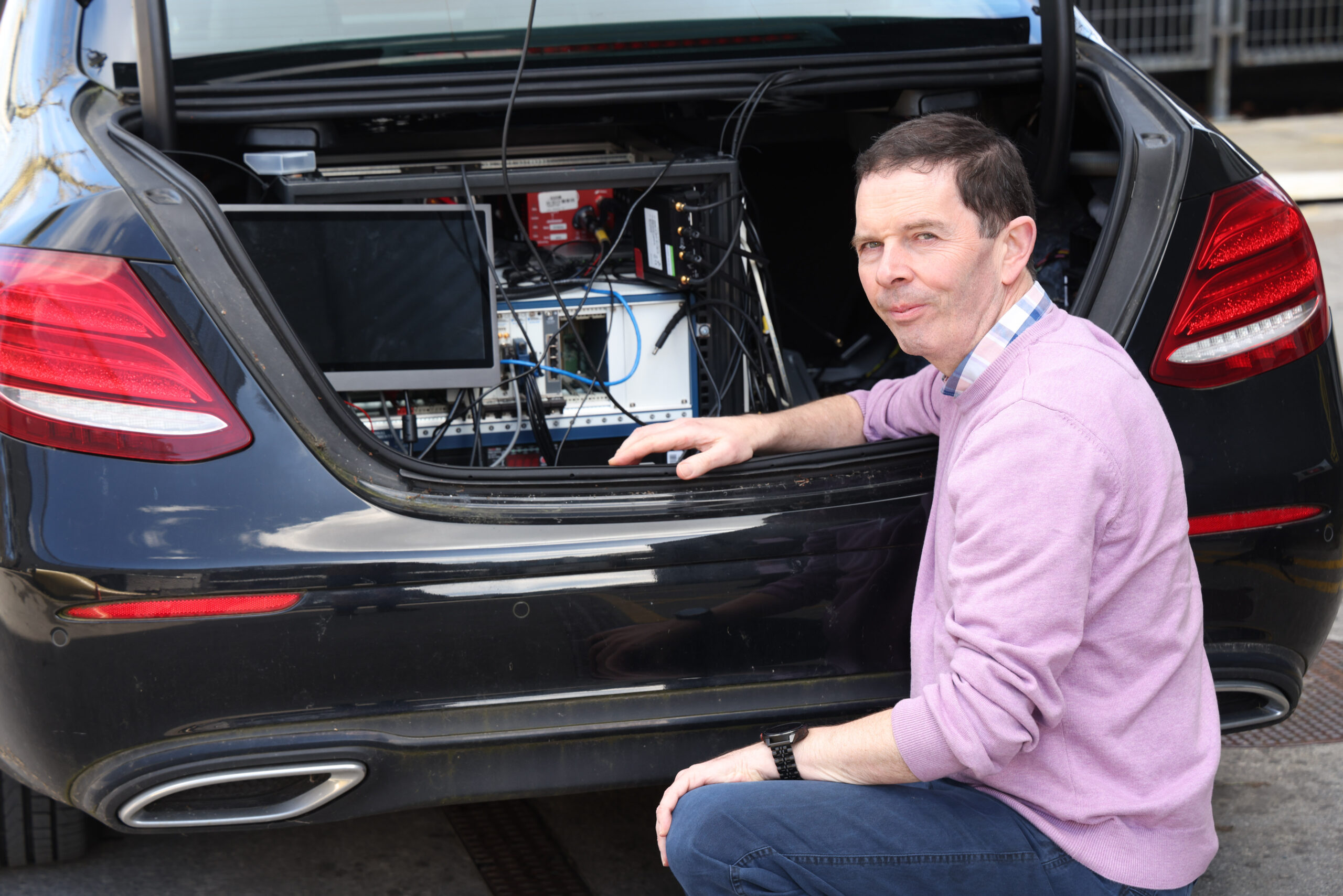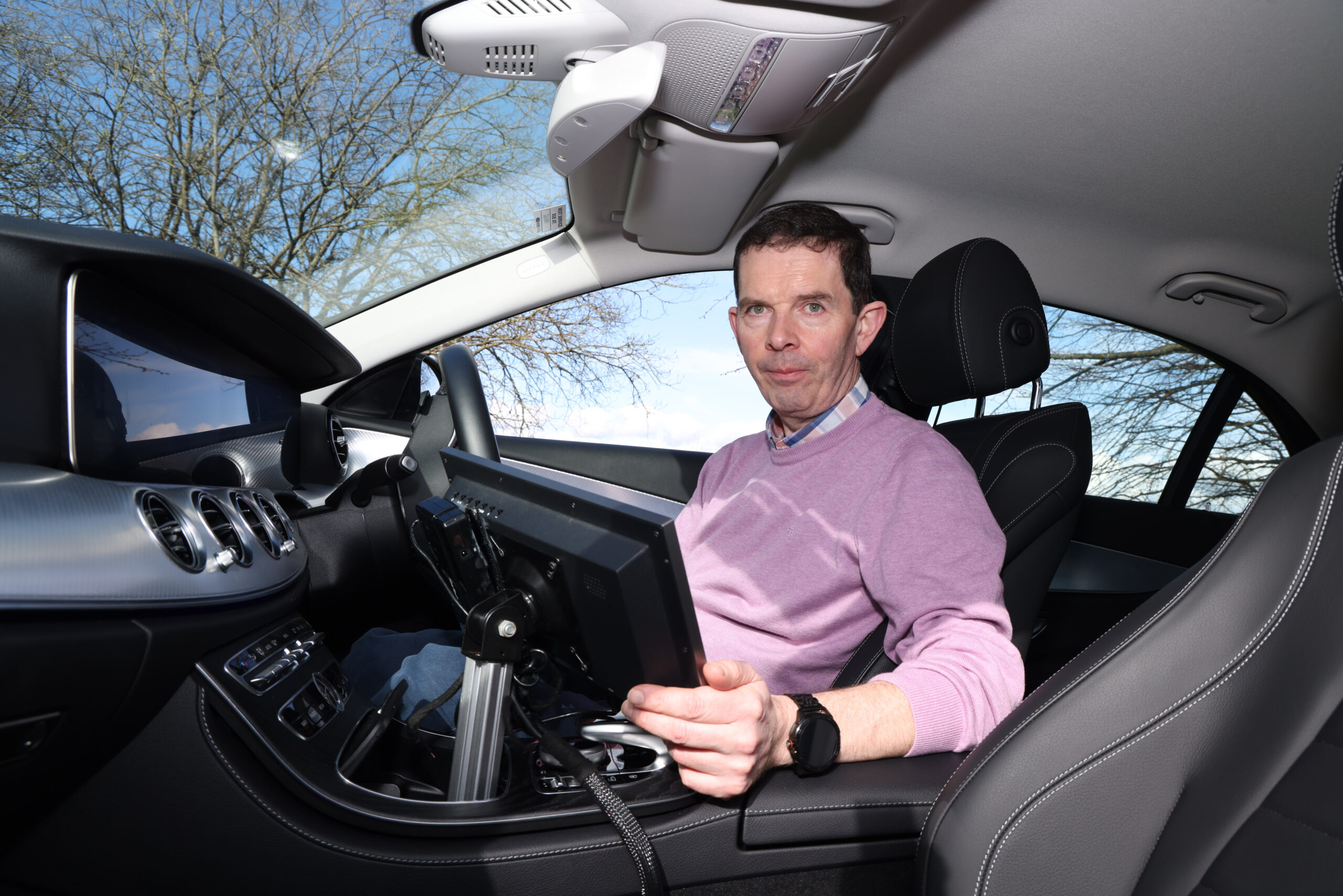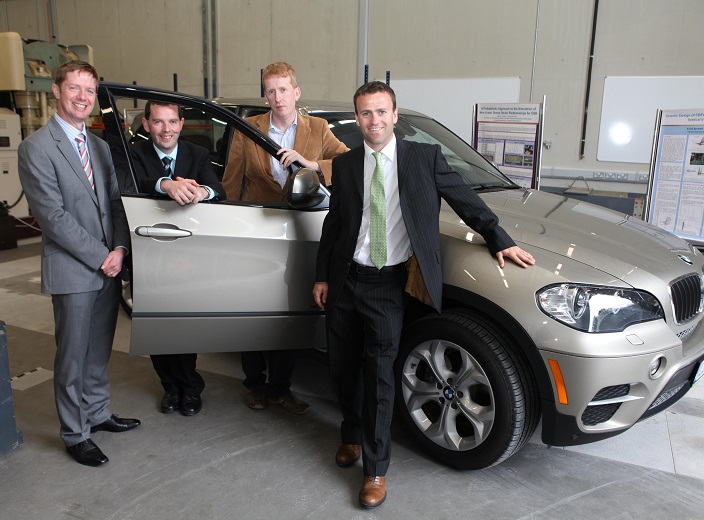
In the wake of rising road fatalities across Ireland, Cois Coiribe had the opportunity to connect with Prof Martin Glavin, Professor of Electronic and Computer Engineering at the University of Galway. With poor driving going beyond factors like speeding, drug- and drink-driving, Prof Glavin shares his research and thoughts on the impact of distracted behaviour while behind the wheel. The topic was covered in his recent co-hosted special about Irish road safety featured on RTÉ Prime Time. Highlighting his activities as co-director of the University’s Connaught Automotive Research (CAR) Group, Prof Glavin investigates the all-important question: where does driver attention wander while on the road?
Road fatalities have been increasing since 2021, with the number of deaths in 2024 already greater than the total recorded during the same period in 2023. This year, road-related deaths have already exceeded 100, and based on this trajectory, fatalities are on track to be 15% higher by year end compared to 2023.
To better understand driver safety, Prof Glavin and Prof Edward Jones of the College of Engineering & Informatics and University of Galway’s Connaught Automotive Research (CAR) Group examine causal links – technical, sociological or environmental – for the surge in road deaths.
They are funded by Science Foundation Ireland (SFI), are members of Lero and work collaboratively with major automotive supplier Valeo. University of Galway’s campus serves as a testbed for improved vehicle safety, with the CAR Group heading investigations by the University’s Lero SFI Research Centre into signal processing technology, which aims to help vehicles see and better adapt to complex environments.
According to Prof Glavin, there is no proven clear leading factor among the investigated causal links. However, one commonality between accident analysis studies indicates speed as a major influence alongside the regular contenders, such as drug- and drink-driving, with a significant 24% of drivers involved in collisions having driven after consuming alcohol in 2023. Besides speeding and drug/drink-driving, the Gardaí have indicated widespread neglect of seatbelts as a significant influence on the rising death tolls on Irish roads, and research by the Road Safety Authority (RSA) found that 22% of car users killed between 2019 and 2023 were not wearing a seat belt.
Even so, the RSA’s most-cited contributory factor remains speed. However, Prof Glavin reminds us that while speed is definitely a major factor in accidents, it is not the only influence. According to Peter Walsh, CEO of Transport Infrastructure Ireland (TII), the safest roads are motorways, proving themselves less accident-prone than rural roads, despite their average traversal speed. A danger persists that as speed limits are reduced on the main roads, it could result in increased speeding on “quiet” country roads that are virtually impossible to police comprehensively.
Despite improvements in vehicles and road safety over the years – like the rollout of the Government Road Safety Strategy, which aims to reduce road deaths by 50% in the next 10 years – accident statistics are still stubbornly high, with long-term road fatality numbers on an upswing. In March of this year, Minister for Finance and former Minister of State at the Department of Transport Jack Chambers said that 40 more people will die on Irish roads this year compared to 2023 if current trends persist.
With advancements in propulsion technology and AI, cars have become more comfortable, reliable and powerful. Most vehicles on Irish roads easily take drivers from 0kmh to 100kmh in less than 10 seconds.
Drivers can sustain speeds over 120kmh while air-conditioned and guided by digital maps, massaged by heated seats and serenaded with music that suffers little background interference, be it from the engine, tyres or wind turbulence. Suspension smooths rough surfaces, and the automatic gearbox decides an optimal ratio. Or perhaps an electric motor silently maintains the driver’s chosen speed. Travelling at 30kmh or 130kmh feels much the same.

Even with endless campaigns urging us to drive safely, behaviour behind the wheel is getting worse. Worryingly, as many as 20–30% of all collisions in the country are likely to have distracted driving as a cause, which equates to over 1,400 devastating collisions on Irish roads. Modern drivers have less to think about when controlling a car, and with this freedom our minds tend to wander.
Take the mobile phone for example; it has become ever more central to our lives and is a major source of daily distraction. Once merely an instrument to take and make calls, it is now a portable window to the internet as well as an instant connection to the addictive world of social media.
In May of this year, Garda Commissioner Drew Harris told the Oireachtas Transport Committee that Gardaí had observed a 55% increase in fixed charge notices due to mobile phone use. This data was collected following the rollout of a mandatory 30-minute dedicated road policing shift, started on 12 April as a response to the upward trend in road deaths. This is worrying, as these are only the instances being observed and recorded, indicating that on-the-road mobile phone distraction is potentially a much greater threat. Prof Glavin puts it like this: “Look at a bus stop queue, a shopping queue, a restaurant table, a lecture theatre full of students – as soon as we have more than 15 seconds of free time, we pick up our phone and start scrolling, we’re all guilty! This, I really believe, is a game-changer for road safety.”
Given our newfound freedom from more tedious tasks while driving a vehicle, modern drivers hit that mental threshold: I’m not too busy, I’ll just check …

Prof Glavin recommends standing on the Quincentennial bridge and watching traffic pass by. If it is stopped or moving slowly, you’ll likely observe many drivers on their phones. You may also observe the same phenomenon even when traffic is moving quickly, and therein lies the problem. Familiarity is not indicative of safety. Statistics show more rush-hour accidents in recent years, despite drivers travelling on familiar roads. In fact, data shows that serious incidents most frequently occur between the hours of 4pm and 8pm.
“I live in the countryside, and the number of drivers who pass in cars while on their phones is scary,” says Prof Glavin. “What’s even more scary is the number of younger drivers who pass in tractors while on their phones. That’s maybe 8 tonnes of steel, pulling 20 tonnes of crop or machinery behind it, travelling at up to 50kmh, with the driver not looking where they are going.”
A 2020 survey conducted by the RSA on driver attitudes and behaviour collated data from two danger groups. Danger Group 2, which comprised younger drivers, revealed that a startling 15% of motorists talk on handheld devices, text or check apps with some regularity while driving. In addition, there was an increase of 50% in the defined “poorest driver behaviour” segment.
In Prof Glavin’s recent Prime Time piece with RTÉ’s Jack McCarron, Jack drove the CAR Group lab’s test car while completing some tasks on his phone. This was done on a test track in a safe and controlled environment with no other traffic or pedestrians. During one test, Jack was instructed by Prof Glavin to type and send a text; the data captured found that Jack’s eyes were off the road for 61% of the time during the lap’s duration.
“Admittedly, he had to do more than simply ‘like’ a post,” says Prof Glavin, “but it showed that while operating his handset while driving, he travelled several hundreds of metres during a short journey without looking where he was going.”
People up and down the country are doing exactly this on public roads. Operating a handset while driving is dangerous. There is no safe way to do it, and it’s not something a driver can get better at. Drivers simply become more complacent. They’ve done it in the past and they’ve been fine, so they think: I’ll just check …
A few years ago, there was a promise of the imminent arrival of fully autonomous cars; however, this is still a distant horizon. We’ve made significant strides such as automated emergency braking that will prevent serious low-speed accidents, and we have lane-keeping assistance and automatic cruise control, which work well in motorway environments with straight roads, few junctions, good visibility and no pedestrians, cyclists or e-scooters. Yet, the issue persists: it’s hard to stop two tonnes of metal quickly. If a driver loses control, or something appears in front of a car within its stopping distance, very little can prevent an accident. The trick is to prevent that situation from happening.
The University’s CAR Group are hard at work with new generations of sensors and AI algorithms, aiming to help save lives on our roads. Their primary objective is to develop technology for intelligent vehicles, applying cutting-edge techniques in signal processing, image processing, computer vision and machine learning.
As part of ongoing research, members of the CAR Group conducted a study on driver gaze behaviour. It found that drivers’ lack of forward perception when moving onto a roundabout poses a major threat to other road users. They proposed a warning system be developed to assist drivers in diverting their gaze towards the area needing greater attention. Any distracted driving could potentially benefit from this type of system, helping everyone maintain better safety standards as equal stakeholders of the road. But road safety is a well-considered journey, and we must practise vigilance first as we await technology to pave the way towards fully autonomous vehicles.

Prof Glavin’s independent research and insights, which offer real world data, have supported the work of Forensic Collision Investigators in the Gardaí both locally and nationally. Garda Eoin O’Connor was a Collision Investigator for 10 years, attached to the Roads Policing Unit in the Galway Division up to March 2024. He was then promoted to Sergeant in Community Engagement at Mayorstone Garda Station, Limerick. He had this to say about Prof Glavin’s work: “Understanding research on driver perception is hugely important for our work as Collision Investigators. I agree that driver distraction is a significant factor in the increase in road fatalities. [When investigating incidents] without in-car camera technology, [however], it is very difficult to prove beyond reasonable doubt that it is a specific cause.”
As drivers return to work, school and college, they will hit the roads in greater numbers. The days will get shorter, and more travel will happen in twilight and darkness, yet we will also have increased efforts by the Gardaí and RSA to implement the drive safely awareness campaign, including stricter speed enforcement. Current Minister of State for Transport James Lawless revealed that a graduated penalty point system for speeding is already being considered by the Government. This comes after the Oireachtas Transport Committee received updated statistics that one in five drivers admit to checking their phone while driving, and that there was a 4% and 5% decrease in seatbelt-wearing compliance for drivers and front-seat passengers respectively when comparing the RSA’s 2023 observational survey to the prior year.
Unless drivers change their behaviour behind the wheel, we will keep bearing witness to tragic accidents on our roads that steal lives and have ruinous impacts for friends and families. Perhaps next time there’s a bridge or a roundabout or a long stretch of seemingly open road, take a measured moment in case luck runs out while thinking: I’ll just check …
“My message to drivers,” says Prof Glavin, “is keep your speed down and your eyes up! Let’s all take responsibility to maintain Irish road safety so that everyone gets to go home to their loved ones.”
Learn more about University of Galway’s Connaught Automotive Research (CAR) Group and their efforts to develop signal and image processing technology for the automotive industry.